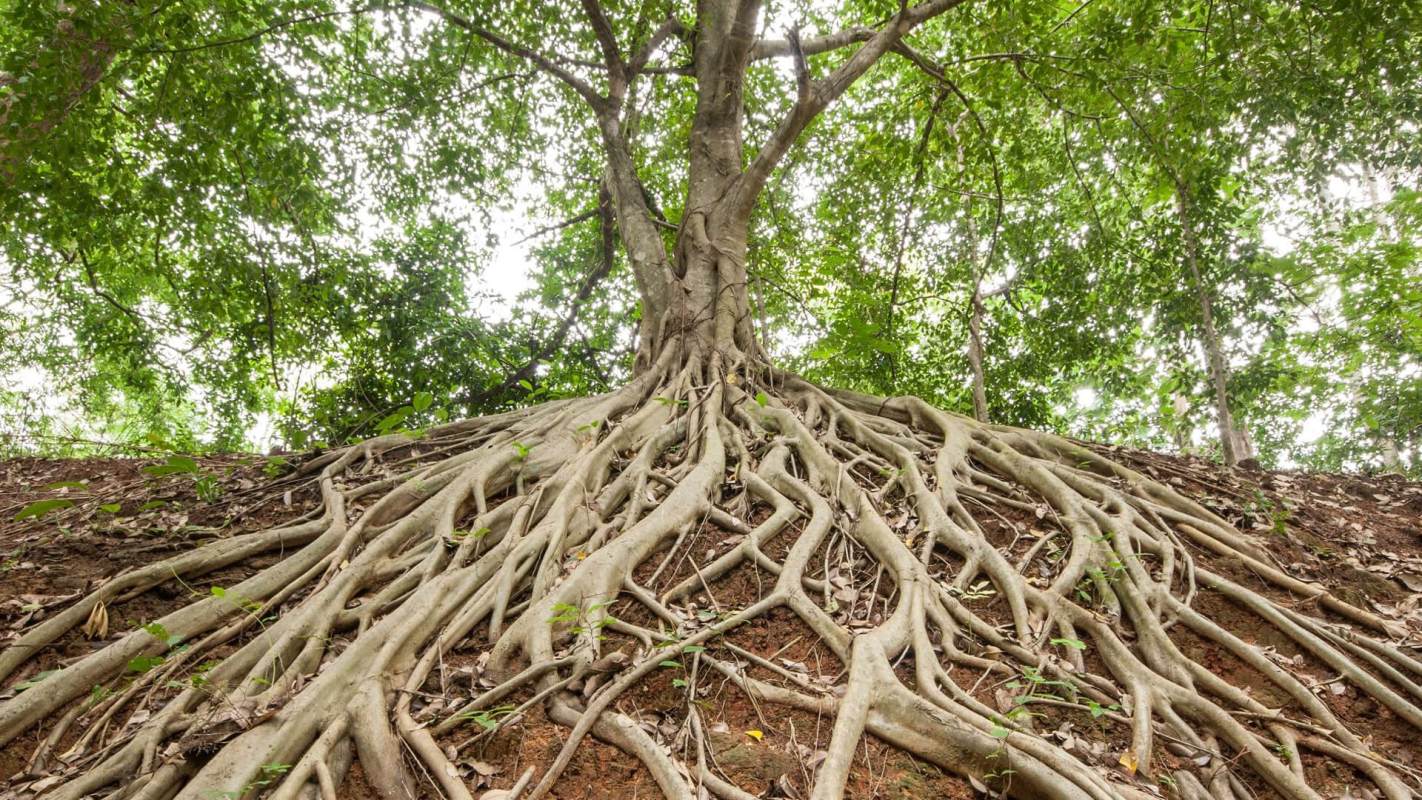The "wood wide web" is like social media for trees — it's a complex system that allows them to send messages to each other through roots and microorganisms.
Scientists have studied this phenomenon for years in hopes that they can better shield trees from decreased biodiversity, drought, and other effects of climate change.
What is the wood wide web?
Trees typically live longer when grown in forests than in urban environments. Scientists have hypothesized that when trees are in close proximity, they can send nutrients to each other through their roots.
Dendrologists — scientists who study wooded plants — tested this theory using trees in North American forests. They injected carbon dioxide gas (substituted with radiolabeled carbon) into Birch trees.
Radiolabeling is a labeling technique that allows researchers to track molecules' movement, so the dendrologists observed the carbon's journey through the trees.
In the experiment, researchers covered nearby fir trees with cloth, to block their ability to consume nutrients. They eventually found high levels of radiolabeled carbon in the fir trees' trunks, proving that the birch trees were sending them nutrients they lacked.
Their findings verified that trees communicate and share resources through their roots, a system now colloquially called the "wood wide web."
How do trees communicate in the wood wide web?
To communicate with each other, trees rely on a symbiotic relationship – a mutually beneficial relationship between two organisms – with microbes living in the soil like bacteria and fungi. These microbes source sugars from the tree, and in return, provide essential minerals. These neighborly relationships are called mycorrhizal networks.
Trees that have the same types of fungi and bacteria in their mycorrhizal networks recognize each other as the same species, which allows them to send signals and share resources.
Why is the wood wide web important?
The wood wide web is vital for maintaining tree health under harmful conditions because trees alert their neighbors of approaching dangers.
When environmental stressors like predators, toxins, or pathogenic microbes attack a network of trees, they can warn each other of the threat and then release hormones and chemicals to defend themselves.
Scientists also estimate that mycorrhizal fungi provide as much as 80% of trees' nutrients, making them essential for maintaining forests.
Writing for the Guardian, biologists Toby Kiers and Merlin Sheldrake, who work to sustain these networks, said: "We can no longer overlook what's underground… Mycorrhizal networks should be regarded as a public good to be protected and restored."
How does the wood wide web help protect trees from climate change?
Trees serve a vital role in sustaining life on Earth. They absorb planet-warming carbon gas and produce fresh oxygen for us to breathe.
The wood wide web helps trees work together to survive drought, deforestation, and rising temperatures. However, scientists project more than 90% of the Earth's soil will be compromised by 2050 from pollution and farming practices, which puts the biodiversity of these networks at risk.
Researchers like Kiers and Sheldrake are mapping these systems, advocating for the planet's underground heroes, and ensuring trees continue to be great neighbors.
Follow The Cool Down on Instagram and subscribe to our newsletter.








